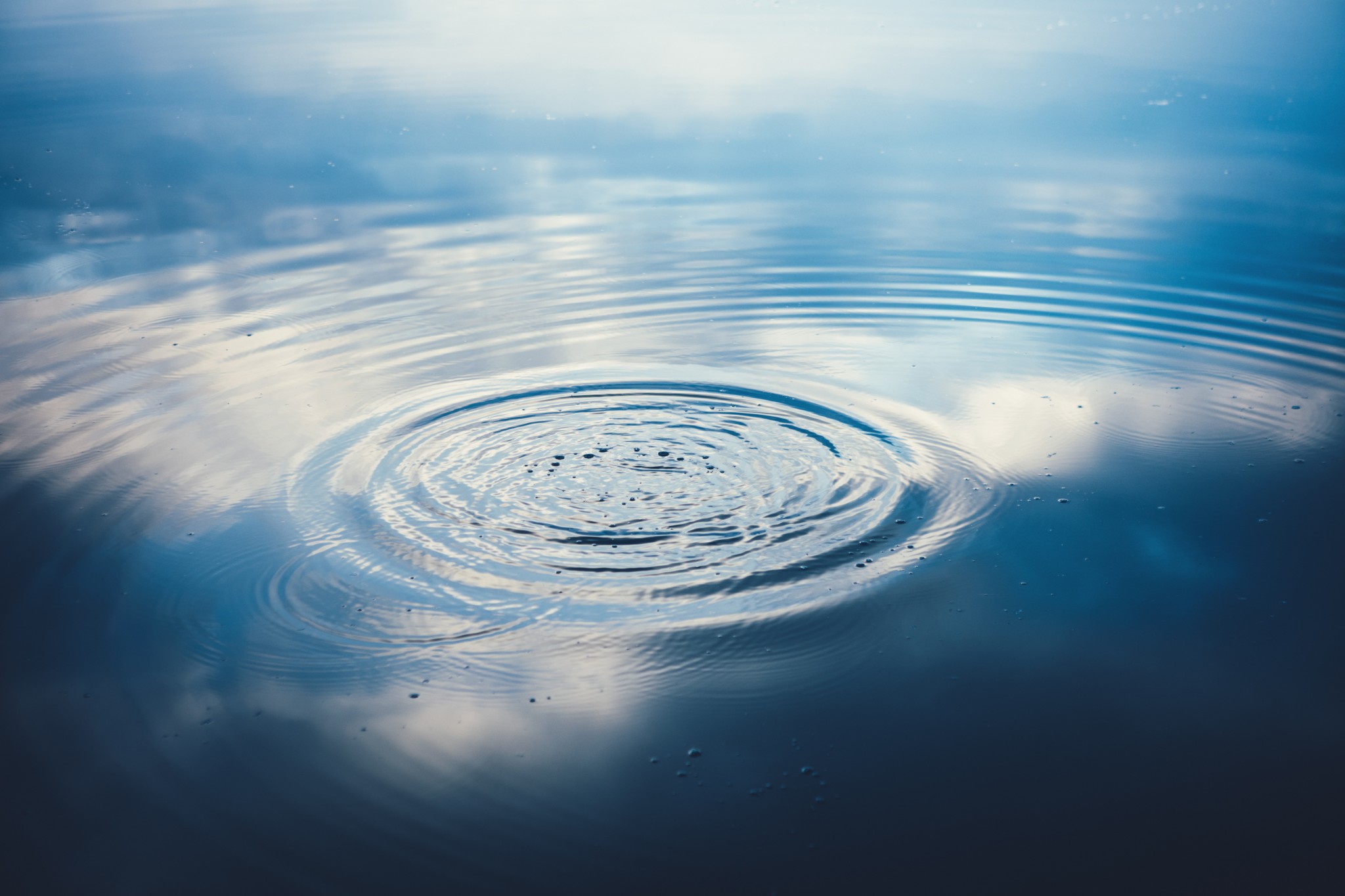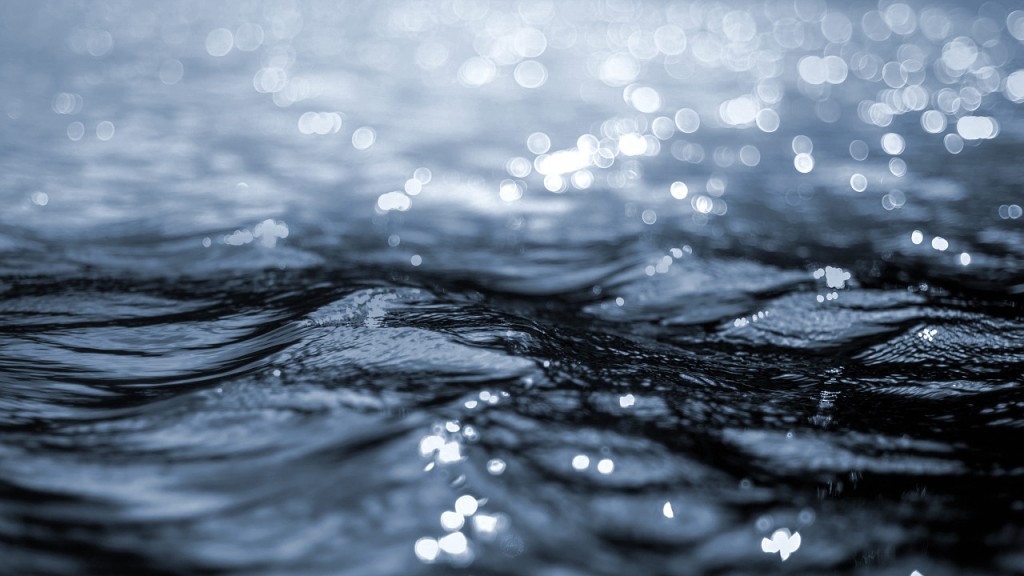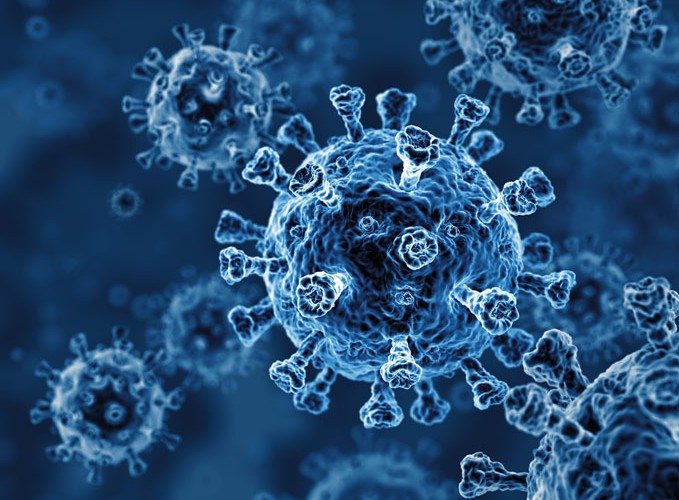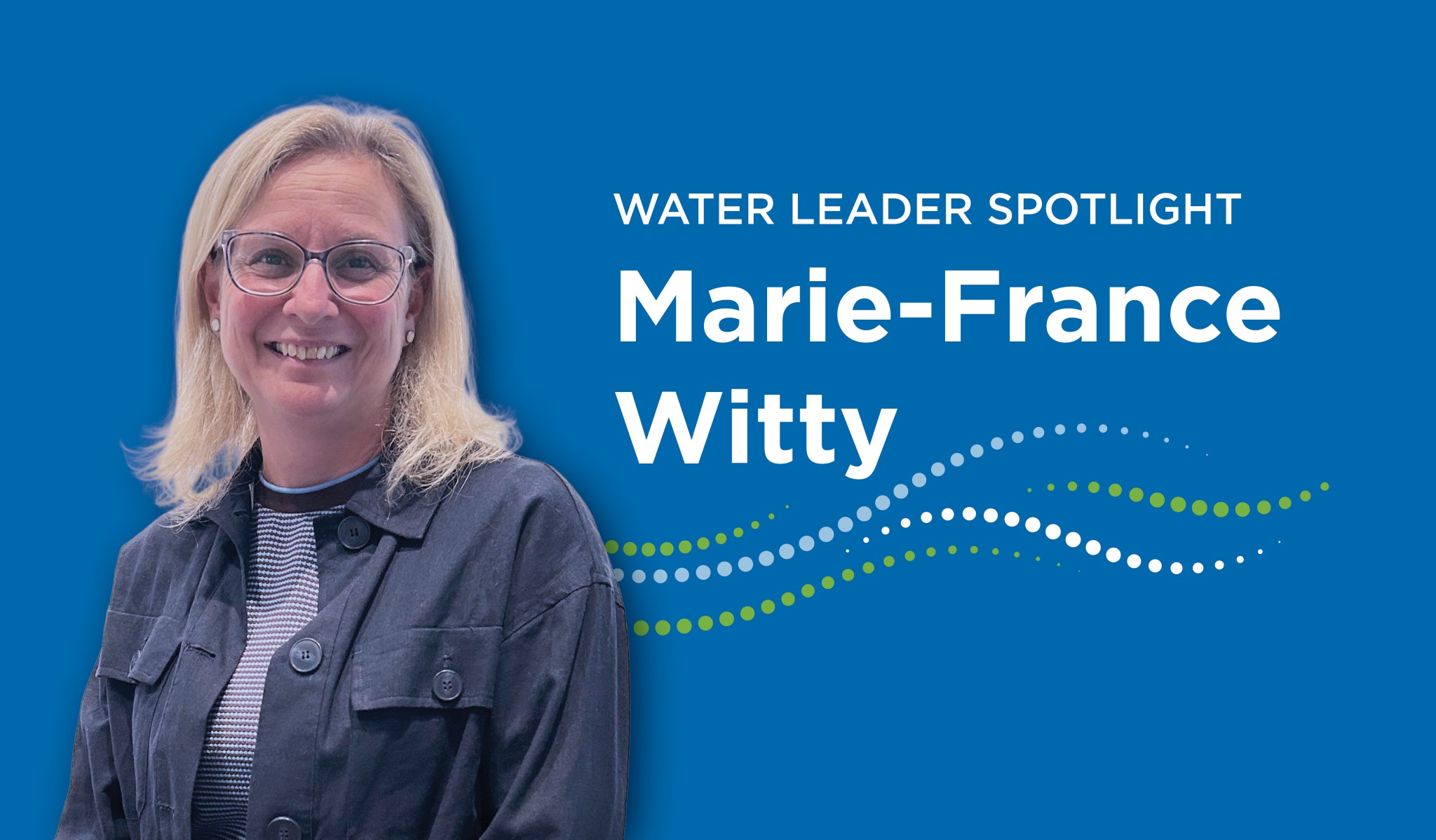Thought leader interview with Dr. Monica Emelko from the University of Waterloo
September 5, 2023
CWN’s quarterly newsletter with the latest news, insights and thought leadership.
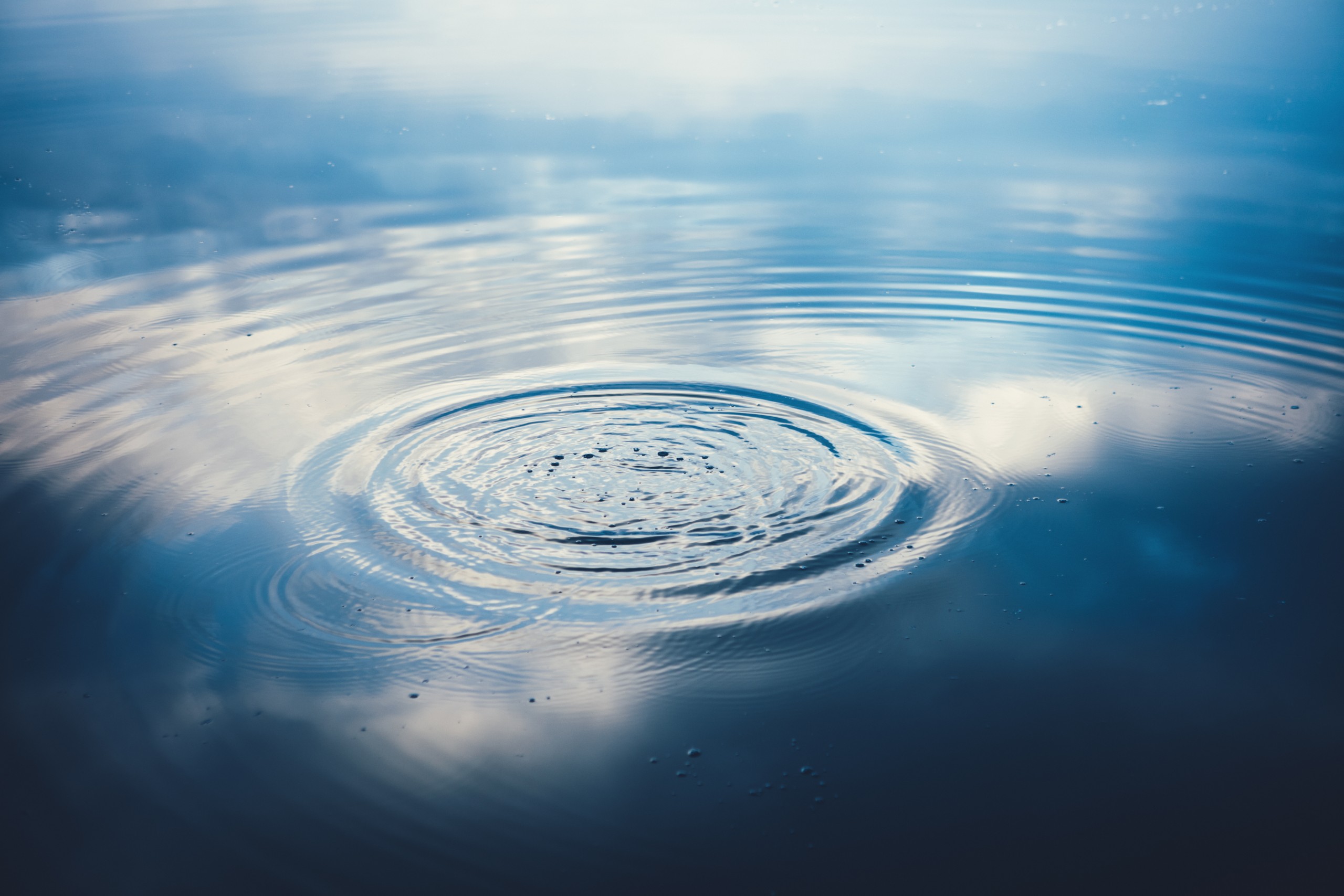
This thought leader interview features Dr. Monica Emelko, Canada Research Chair of Water Science, Technology and Policy and Scientific Director of the forWater Network at the University of Waterloo. She shares her expertise and experience in researching the impact of forest fires on drinking water source quality and treatability.
- Can you share some reflections on how you came to focus on water and forests?
I am classically trained as a water treatment engineer—we are taught to treat whatever comes out of the pipe. I came to work on forests and water by accident. In 2004, Dr. Mike Stone, a water quality and sediment transport scientist at the University of Waterloo invited me to meet with him and a forest hydrologist, Dr. Uldis Silins of the University of Alberta, to discuss the effects of the 2003 Lost Creek wildfire on downstream hydrology and water quality, ecology, and treatability in southwestern Alberta.
That meeting was transformative. I realized then that studying the effects of severe wildfire on water quality and treatability would reveal alarming inadequacies in how we plan to provide adequate amounts of safe drinking water.
We have worked together since then, in a truly transdisciplinary way, learning about each other’s perspectives and expertise. We realized that while we are all water scientists, we don’t necessarily speak the same language. Rapid recovery after wildfire might mean a few years to foresters and watershed scientists, but to drinking water treatment engineers it is more like a few hours or days. We have spent a lot of time together—that has provided opportunities to learn from each other.
Part of why we spend so much time together is because working at the watershed-scale is time-consuming. Spending time at field sites is critical—reconnaissance is essential to minimizing errors like mischaracterizing impacts of wildfires on water quality because of missing dilution effects such as those due to surface and groundwater mixing. These types of errors are easy to make if you don’t have experience conducting this type of fieldwork. This is a great example of why it’s critical to have a diverse team of experts—I believe that the combination of our collective backgrounds enabled us to be among the first teams cited by IPCC in recognizing climate-change-exacerbated wildfire threats to drinking water treatability.
Luckily, I married Dr. Mike Stone, so we have spent our summers together out in the field, in forests, rivers, and treatment plants impacted or threatened by wildfires. When we had a family, we brought the kids too.
- What is the forWater Network’s focus?
The forWater Network prioritizes achieving drinking water security through integrated landscape and forest management and drinking water treatment. In many parts of the world, including Canada, people rely on water that predominantly originates from forested landscapes. The mandate of the forWater Network is to advance source water protection strategies for communities reliant on forests for water, particularly in a changing climate.
I am an engineer, and engineers like to problem solve and build solutions. There is an overlap between engineering and forestry. Can we engineer the environment for a win-win? We’ve made advances in source water protection by reducing pollutant discharges to water supplies. While they have served us well, these traditional attitudes on source water protection represent fences that Mother Nature can burn through. So, we need to think at the landscape scale and try to create resilient landscapes for resilient water supplies. We also need to carefully consider how water is used and valued, recreational, spiritual, cultural, as an economic resource, and to support life and biodiversity, and how these uses and values are to be balanced and prioritized in going forward.
Currently, we don’t prioritize drinking water security in managing forests.
To prioritize drinking water security, we must recognize that climate change has undermined the basic assumption of stationarity that has facilitated the management of water supplies, demands, and risks. We can no longer rely on our experiences of the past to predict the challenges we’ll face in the future. Because of our changing climate, at times, we may not have enough water in some regions and too much elsewhere. We’ll need to be innovative in how we manage these challenges. We’ll also likely have to face the reality of trade-offs and recognize that we may have to prioritize some water values, like safe and affordable drinking water over others.
Critically, we’ll also need to (re)invest in watershed monitoring—these programs are often among the first to be cut. How can water utilities make treatment investment decisions if they don’t characterize baseline water quality? How can they know if they’re experiencing an impact of a disturbance like wildfire without those data?
- There have been significant advances in our understanding of health threats to water as a result of forest fires. What are some key takeaways from your research and what you’ve learned from fires in Fort McMurray, and others?
Firstly, you don’t have to be in the path of a fire to be impacted. And the impact may come years later, far downstream. Fires can cause shifts in water quality and ecology. For example, we now know that the proliferation of toxic algae that can be problematic for some treatment systems is exacerbated by nutrients such as phosphorus, which are mobilized by fires and delivered to water supplies by both atmospheric deposition and runoff processes. Fort McMurray is still experiencing impacts eight years after the Horse River wildfire, including annual algal blooms. Significant treatment infrastructure upgrades may be needed as a result.
Another important aspect of water contamination from fires is the recognition that in urban and peri-urban regions, fires may result in the release of persistent organic pollutants at trace concentrations from the built environment. For example, concerns have been raised about per- and polyfluorinated substances (PFAS) known as forever chemicals that are found in a variety of human-made products including fire retardants. After the recent wildfires in California, we learned that volatile organic compounds such as benzene can be released because of the heating of plastic water pipes during fires. As this summer’s fires in Halifax, Yellowknife and Kelowna demonstrate, fires don’t only happen in rural fields and forests. It’s important to understand and differentiate the impacts of wild land fire versus urban fire. Most water treatment plants do not have the infrastructure needed to treat the range of compounds that might be released from these environments, even if they’re only present at trace levels. Moreover, we need to think about who is responsible for identifying and managing such impacts, especially if they occur after drinking water has been treated and is flowing through household plumbing.
- How can Canadian communities address the risk to drinking water from forest fires?
There are a number of ways that communities can address the risk to drinking water from fires. They come down to three main actions.
Firstly, interagency cooperation and communication, and relationship building is critical before a fire occurs. It will help in the response and aftermath. This was demonstrated in Alberta, whereby coincidence my team was conducting CWN research in partnership with Government of Alberta Forestry and Environment ministries and water utilities. We wrapped up work in February of 2016 and many of the same people re-connected in May when the Horse River wildfire broke out. Several of our colleagues commented that the connections that had been made through that project contributed to more efficient wildfire response.
Secondly, it’s critical to understand your source water before it is disturbed by fire. Investing in sustained monitoring is essential and well worth it. You should monitor for sentinel indicators to know what has changed (or not) after fire; for example, changes to the amount and character of dissolved organic carbon. Fire transforms it so that it is more aromatic. Monitoring of turbidity is also critical, as is having an understanding of sediment-associated phosphorus. Those few metrics can go a long way in identifying potential changes to water quality and treatability after a fire.
Thirdly, it’s important to understand how to run your treatment plant and what changes to make to operations as source water quality changes as a result of a fire or any other watershed disturbance. Ensuring you have adequate operational supports in place for periods of stress is also critical. Large utilities are better prepared because they have greater capacity and more operators. Those utilities with access to analytical facilities like Calgary and Halifax who have their own labs can get results in near real time, making them nimbler and more resilient when faced with source water quality challenges. Practicing operator response to challenging source water conditions is also important. Whether a fire, flood or hurricane, the identification of strategies for enhanced operational resilience will help to reduce the probability of operational upsets and service disruptions.
- Who inspires you in your research?
My children, my family, my friends—they all inspire me. Water is life and we all rely on it. I especially think about those who are most vulnerable because they are young or perhaps immunocompromised. Most of us take water for granted and forget that prior to the advent of chlorination and filtration plants that enabled the provision of safe water for basic hygiene and sanitation at the turn of the last century, four of the major causes of death were attributable to infectious disease. Community-scale distribution of water has changed that in many, but not all parts of the world. Thus, I don’t only think of myself as a water treatment engineer—I am also a public health engineer. We’ve figured out how to treat pathogens and remove contaminants from water effectively, now—to keep being able to do so, climate change is forcing us to increase forest and treatment resilience.
More information about the forWater Network is available here.
More information about the Water Science, Technology & Policy Group is available here.



